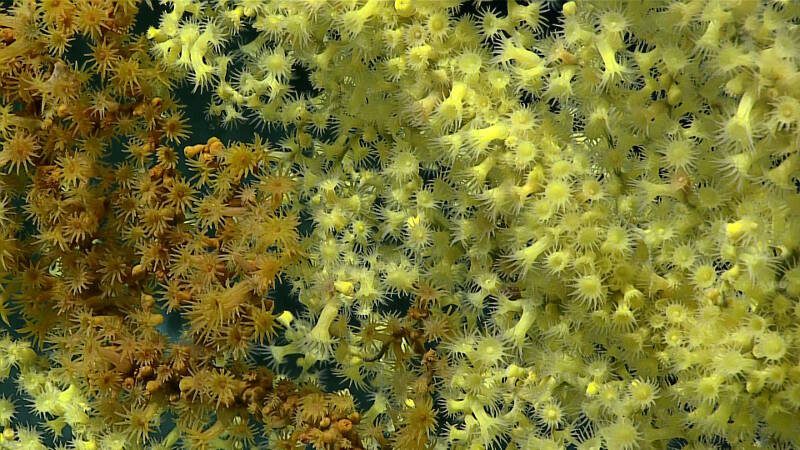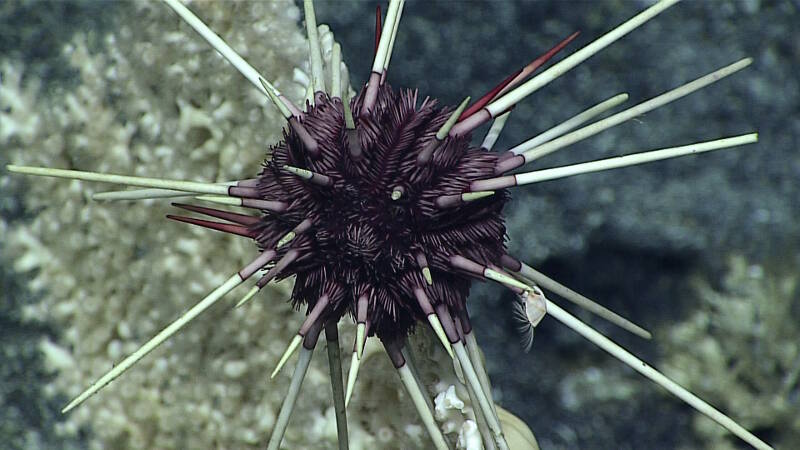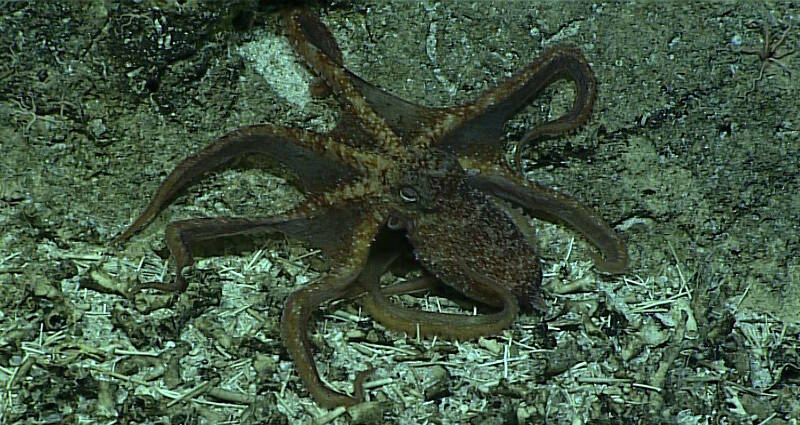This dive was on a steep slope along the western side of unnamed seamount within the Phoenix Islands Protected Area. The seafloor had large concavities potentially arisen from a mass wasting event in its geological history. At 746 meters depth, the track was a gradual slope composed of loose dead coral rubble covering sandy sediments. Along here, sponges were the dominant fauna encountered, with different types of tubular, vase-like individuals. Other fauna observed included a red fringed tunicate; an urchin; squat lobsters; and fishes: alfonsinos, congrid eels, and oreo fish. Around 740 meters, the seafloor transitioned to a steep wall of heavily eroded carbonate and a high density of brittle stars, with a north to south current. Along the wall were different kinds of sponges and corals including stony corals (colonial and solitary forms) and octocorals. Invertebrates observed included large shrimp, hermit and homolid crabs, large purple crinoids with myzostomes on cirri, squat lobsters, and sea stars. One crab was observed gleaning material from its anemone hat using its chelipeds. Other fishes included arrow-tooth eels, codlings, brotulas (a species not yet seen on this expedition), and roughies. Around 600 meters, the track progressed along a gradually sloped ridge feature carpeted by buried ophiuroids, with steep drop offs on either side and a current from south to north. Along this feature, the largest coral colonies were observed, including stony corals, bamboos, and other octocorals. A few of the large octocorals had brittle star associates with sinusoidal arms and a bumpy textured disc. Toward the end of the dive, there were several large gold corals (~1.5 meters), some completely covering the host coral skeleton. On one particular colony, the scientists noted the areas of transition from live bamboo tissue to dead skeleton to live zoanthid polyps. Other invertebrates observed included an octopus with a projection on its head and two rows of suckers on each arm, demosponges, a salp, sea stars, stalked crinoid, large vase sponges, and pancake urchins with parasites. Along the ridge, several fish were observed including oreo fish, spike fish, pomfrets, rattail, roughies, beardfish, scorpionfish, deep-sea cardinalfish, goosefish, and a deep-water stingray. Some of the fish observed had gnathiid isopod parasites attached to the fins and scales. Throughout the dive, scientists noted several pencil urchins, known coral predators, on large octocoral fans with areas of bare skeleton in close proximity to the urchins.


